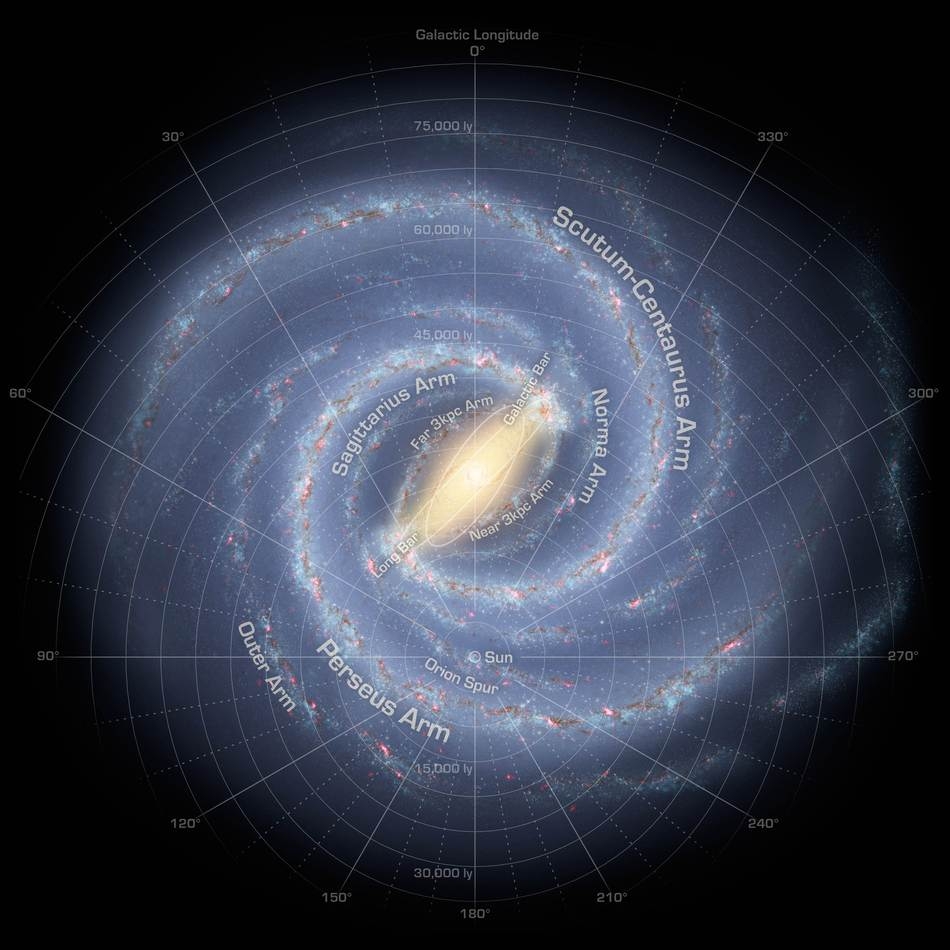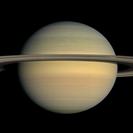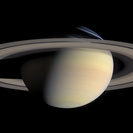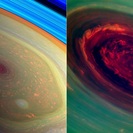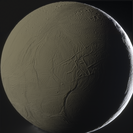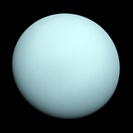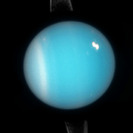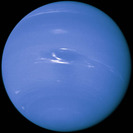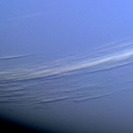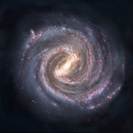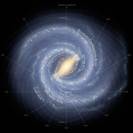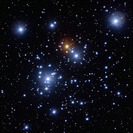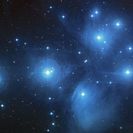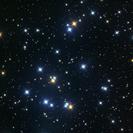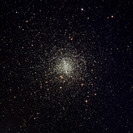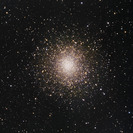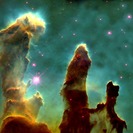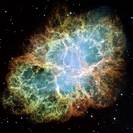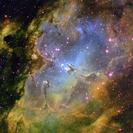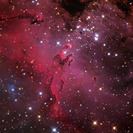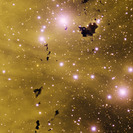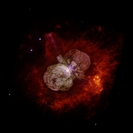This artist's impression shows the Milky Way with its most prominent features. The Milky Way has a central bar with a supermassive black hole at its centre and two major stellar arms (the Perseus Arm and the Scutum-Centaurus Arm). The Sun lies within a smaller arm, the Orion Arm (or Orion Spur), about 27000 light years away from the galaxy centre. The galaxy's diameter is 100 000 to 120 000 light years, making the Milky Way a mid-sized galaxy. If you want to compare the relative sizes of small, mid-sized and huge galaxies you should check out our galaxy comparison images. All stars and nebulae are rotating around the centre of the galaxy; the Sun needs about 230 million years to complete one full orbit.
